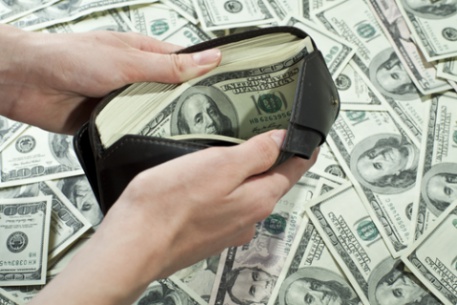Americans Still Love Cash — And Plenty Of It

Despite the hopes of banks, mobile payments innovators and credit-card brands, Americans aren’t getting any closer to being “cashless,” Businessweek reported.
While Americans carry a relatively small amount of cash — an average of $56 — it’s still true that 40 percent of consumer payments are in cash (each one averages $20.73), and the face value of all currency in circulation is growing at a steady 1.7 percent per year.
But 22 percent of Americans have at least $100 in their wallet and 5.2 percent are carrying a $100 bill, according to a recent study by the Boston Fed’s Consumer Payments Research Center. To track how cash is carried, CPRC researchers Claire Greene and Scott Schuh asked a sample of consumers to count how many of each kind of bill they had at the start and end of the day for three days.
Conventional wisdom associates carrying large amounts of cash with the unbanked poor and criminals, but Greene and Schuh found the opposite: There was no evidence of criminal activity, and those carrying $100 or more tend to have higher incomes. Consumers making more than $75,000 are about 50 percent more likely to carry $100 than those making less than $35,000.
Those carrying $100 or more in cash are also more likely to have a credit card, though they tend to pay it off every month. They’re more likely to have education beyond high school, and they’re more likely to be older than 55. But overall, higher income is the best predictor of someone carrying lots of cash.
While people carrying lots of cash skew older, those who are actually carrying at least one $100 bill are more likely to be younger than 25, as well as being female. And although people carrying $100 bills don’t appear to be in any hurry to get rid of them, they’re most commonly used for purchases of $20 or less, the CPRC researchers found.
In the end, the researchers still couldn’t say why so many people still carry so much cash (“consumers place some value on carrying $100 bills for reasons that merit further investigation,” as they put it). What is clear is that, among educated, higher-income Americans who should be targets for mobile payments like Apple Pay and other cash-free payments, a lot of them still like cash.
